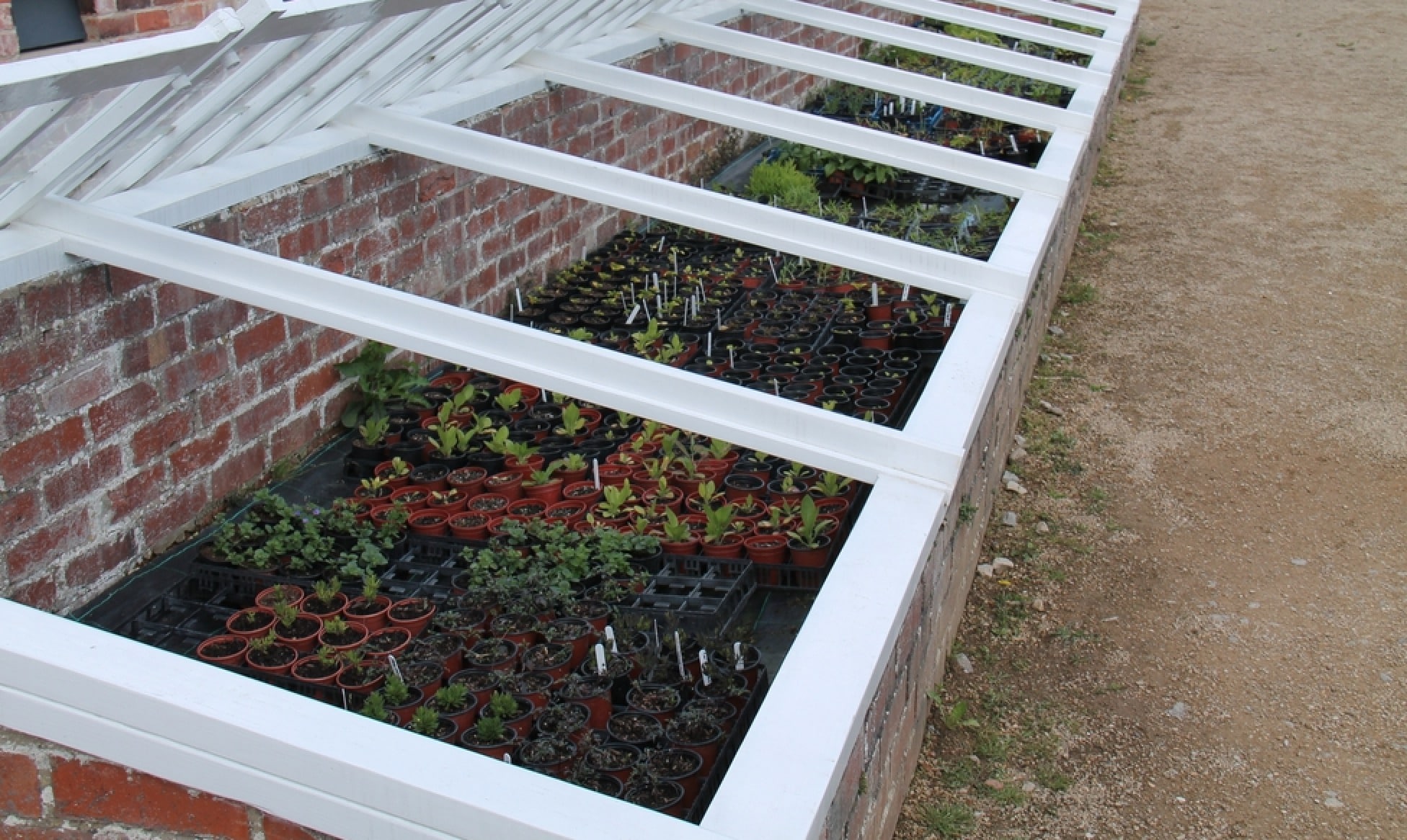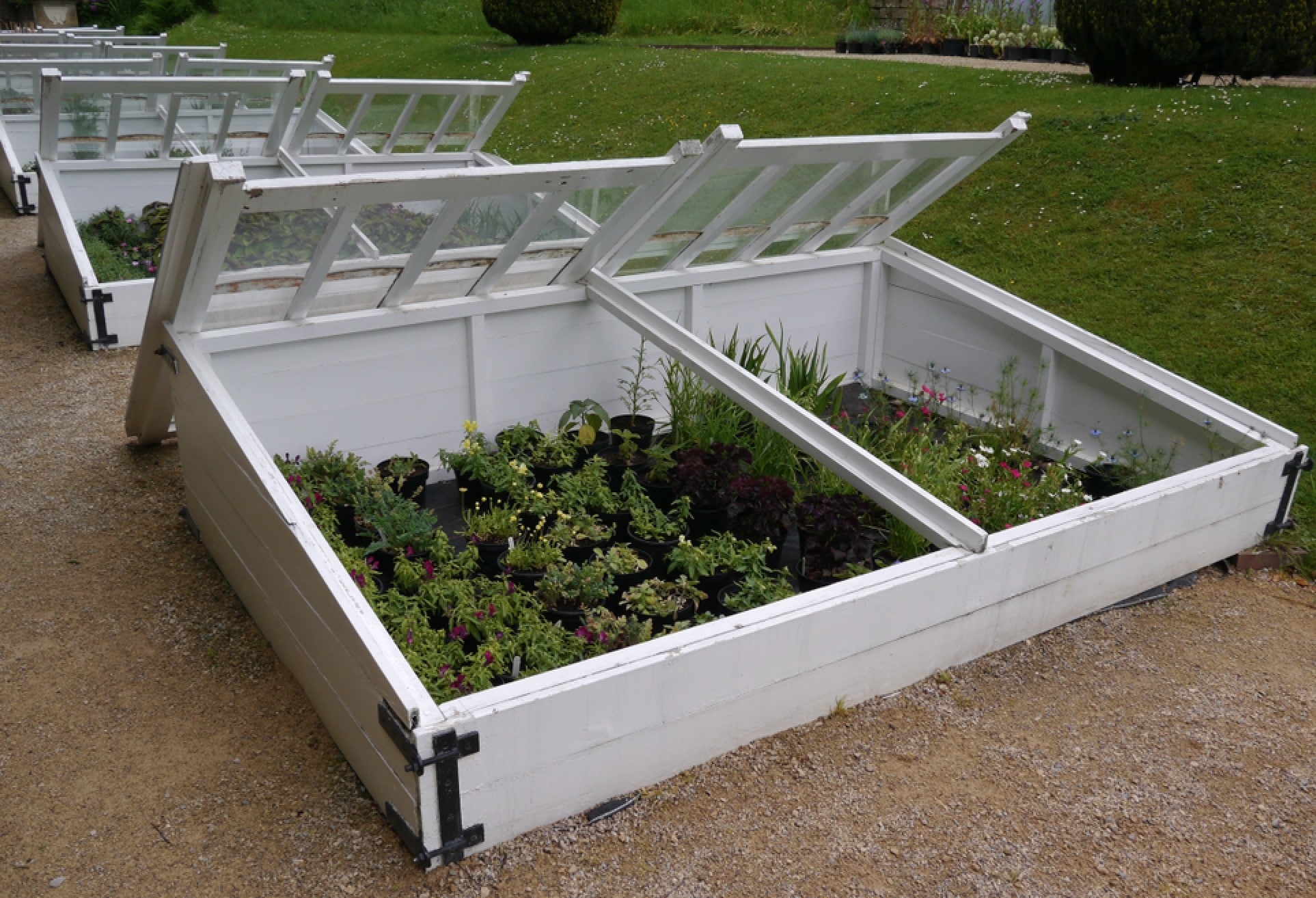What Are Cold Frames, And What do They Do?
A cold frame is a valuable addition to your garden arsenal, particularly in Illinois, where the climate can be unpredictable.
Think of it as a miniature greenhouse—a compact structure that uses the sun’s warming rays to create a microclimate beneficial for plant growth.
Key Components of a Cold Frame:
- Structure: Typically, a cold frame is a bottomless box made of wood, brick, or even bales of hay for insulation.
- Covering: It has a clear, hinged lid often made of glass or transparent plastic which permits sunlight to enter and warms the interior air.
- Orientation: Placing your cold frame facing south ensures maximum exposure to sunlight, especially crucial during the shorter days of early spring and late fall.
Here’s how it functions:
- Warmth: Cold frames trap heat from sunlight, creating a warmer environment than the outside air.
- Protection: By acting as a barrier against wind, these frames shelter plants from harsh conditions.
Uses of Cold Frames:
- Extending the Season: You can start seedlings earlier in spring or keep crops growing longer into the fall and even into winter.
- Transition: The controlled environment helps to harden off seedlings before you move them outdoors.
- Versatility: It is not just for seedlings; cold frames can also nurture herbs and salads through chilly months.
For optimal effectiveness in Illinois, ensure the top of your cold frame can be adjusted.
This allows you to vent excess heat on unusually warm days and prevent overheating your plants.
Remember to water sparingly; the reduced airflow means less evaporation, so your plants will require less water than those outdoors.
Designing and Building Your Cold Frame
Creating a productive cold frame begins with careful design and assembly. You’ll need to choose the right materials, size, and location to optimize your cold frame for Illinois’ climate.
Follow these specific guidelines to set up a structure that can extend your growing season.
Selecting Materials
- Frame: Durable, rot-resistant wood such as cedar is ideal for the frame. Alternatively, UV-resistant PVC can offer longevity and easier maintenance.
- Glazing: Polycarbonate panels make excellent glazing due to their insulation properties and light transmission. Glass is another option, but it can break easily and is heavier.
- Insulation: To maximize heat retention, consider adding insulation to the north side of your cold frame using rigid foam or bubble wrap.
Determining Size and Location
- Size: Aim for a size that’s large enough to house your desired plants but small enough to be manageable. A standard size can be 3 feet wide by 6 feet long.
- Location: Place your cold frame facing south to ensure maximum sunlight exposure. A location with wind protection and good drainage will prevent excess moisture and cold damage.
Assembly Instructions
- Bottom: Start with a rectangular frame, using corner braces to secure.
- Sides: Attach the sides, ensuring the back is taller than the front for optimal sun exposure and runoff.
- Front/back height: Back: 18 inches, Front: 12 inches.
- Lid: The lid should be attached with hinges for easy accessibility.
- Sides: Attach the sides, ensuring the back is taller than the front for optimal sun exposure and runoff.
- Sealing: Use weather stripping along the edges to create a tight seal against the elements.
Managing Cold Frames in Illinois
Cold frames offer an efficient way to extend your growing season in Illinois. By understanding daily maintenance, local weather impact, and effective pest control, you can harness these miniature greenhouses for maximum benefit.
Daily Maintenance
Regularly monitor temperature and moisture levels in your cold frame.
On sunny days, prop open the lid to prevent overheating, and always make sure that your plants have enough water without being waterlogged. Below is a checklist for daily maintenance:
- Ventilation: Open the lid during the day if temperatures exceed 70°F.
- Watering: Keep the soil moist, but avoid overwatering.
- Inspection: Check for signs of disease or stress in plants.
Weather Considerations
In Illinois, weather can be unpredictable; therefore, it’s crucial to adapt the use of your cold frame accordingly.
- Spring: Gradually harden off seedlings by increasing their exposure to the outside temperature.
- Fall: Protect plants from early frost and extend the harvest of cool-season crops.
- Winter: Insulate the cold frame with burlap or straw if extreme cold is forecasted.
- Adjustments: Have a thermometer inside and adjust the lid position to regulate temperature.
Pest Control
Even in a cold frame, plants are susceptible to pests. Regular inspection and cleaning are your first lines of defense.
- Physical Barriers: Use fine mesh or netting to keep pests out.
- Natural Predators: Encourage beneficial insects that prey on common garden pests.
- Sanitation: Remove any dead or decaying plant matter to prevent infestations.
- Organic Treatments: Use organic sprays and treatments if necessary, but do so sparingly and as a last resort.
Season Extension Techniques
Extending your growing season in Illinois is achievable with cold frames, a simple yet effective gardening tool. Through proper implementation of techniques such as seed starting, transplanting and overwintering, and hardening off seedlings, you can enjoy an extended harvest and robust plants.
Seed Starting
Cold frames serve as excellent nurseries for beginning your seeds.
Start seeds earlier than the typical outdoor planting calendar by placing them in the cold frame, which functions as a mini greenhouse.
This setup traps heat from the sun’s rays, entering through the frame’s transparent cover. Here’s a concise strategy for effective seed starting:
- Select cold-tolerant seed varieties.
- Sow seeds in trays or directly in the soil of the cold frame.
- Monitor temperature; aim for a consistent warmth without overheating.
Transplanting and Overwintering
Using cold frames, you can safeguard tender transplants from the unpredictable Illinois weather, as well as overwinter crops for an early spring harvest.
Overwintering requires strategic timing and careful selection of crops that can endure the colder months. To maximize success:
- Transplant seedlings into the cold frame before the first frost.
- Choose hardy varieties that can tolerate lower temperatures.
- Insulate the frame with straw or leaves during extreme cold to retain heat.
Hardening Off Seedlings
Gradually acclimate your seedlings to outdoor conditions through hardening off in the cold frame. This process helps plants adjust to the wind, sun, and varying temperatures before being moved to open garden beds. Follow a progressive approach for hardening off:
- Begin by opening the lid slightly each day to expose seedlings to the elements.
- Gradually increase the duration the lid is open over a period of 7-10 days.
- Ensure the last predicted frost date has passed before fully transplanting seedlings outdoors.
How to Maximizing Crop Yield (Not Just Using a Cold Frame)
To make the most of your cold frame gardening and boost your harvest, it is imperative to focus on soil quality, proper watering and ventilation, as well as choosing the right plants.
Soil Preparation and Fertilization
Soil Quality: Begin by ensuring your cold frame’s soil is rich in nutrients. Test the soil to determine what amendments it might need.
Incorporate compost or a balanced slow-release fertilizer to provide a steady supply of nutrients.
- Compost: Add 2 to 4 inches of compost to enrich the soil structure and fertility.
- Fertilization: Apply a balanced N-P-K (Nitrogen-Phosphorus-Potassium) fertilizer according to the soil test recommendations.
Irrigation and Ventilation
Water Management: Consistent moisture levels are crucial, as the enclosed space can dry out quickly.
Use a watering can or a drip irrigation system for even distribution of water.
- Regularity – Check daily for watering needs, especially on sunny days.
- Ventilation – Open the cold frame lid on warm days to prevent overheating and to allow for air circulation.
Plant Selection
Choose the Right Plants: Select varieties that are well-adapted to the cooler temperatures and shorter daylight hours of Illinois’ extended growing season.
- Hardy Vegetables:
- Spinach
- Kale
- Arugula
- Cool-Season Herbs:
- Parsley
- Cilantro
- Thyme
Frequently Asked Questions
Cold frames are a valuable asset for extending your gardening season in Illinois. Each question below focuses on maximizing their potential to enhance your gardening experience.
What types of vegetables are best suited for cold frame gardening in Illinois’s climate?
Your best candidates for cold frame gardening in Illinois include cool-season crops such as spinach, lettuce, kale, carrots, and cabbage. These varieties can withstand cooler temperatures and thrive in the controlled environment a cold frame provides.
How does a cold frame help in extending the growing season for spinach and other hardy greens in Illinois?
A cold frame creates a microclimate that protects spinach and similar greens from Illinois’s variable weather. This mini greenhouse effect allows sunlight in while shielding the plants from wind and frost, thereby extending your growing season.
When is the ideal time to start planting with a cold frame for a successful garden in the Midwest?
Begin planting in late winter or early spring. The cold frame will help warm the soil and air around your plants, allowing you to start your garden weeks before the last frost date in Illinois.
What are the best practices for using a cold frame to grow tomatoes in Illinois’s variable weather?
For tomatoes, use a cold frame to give seedlings a head start. Start them in the frame, gradually exposing them to the outside environment to harden off before the last frost. Make sure to vent the cold frame on sunny days to prevent overheating.
How can a cold frame be utilized during the summer months to benefit gardening in Illinois?
During the summer, a cold frame can shield plants from intense midday sun and heavy rain. It can also protect young seedlings from pests. Adjust the lid to ensure adequate ventilation and prevent overheating.
What degree of temperature enhancement can be expected from utilizing a cold frame during Illinois’s growing season?
A cold frame can raise the inside temperature by 5-10 degrees Fahrenheit or more on sunny days, depending on the outside temperature.
This can make a significant difference in germination and growth rates for your plants during the Illinois growing season.

